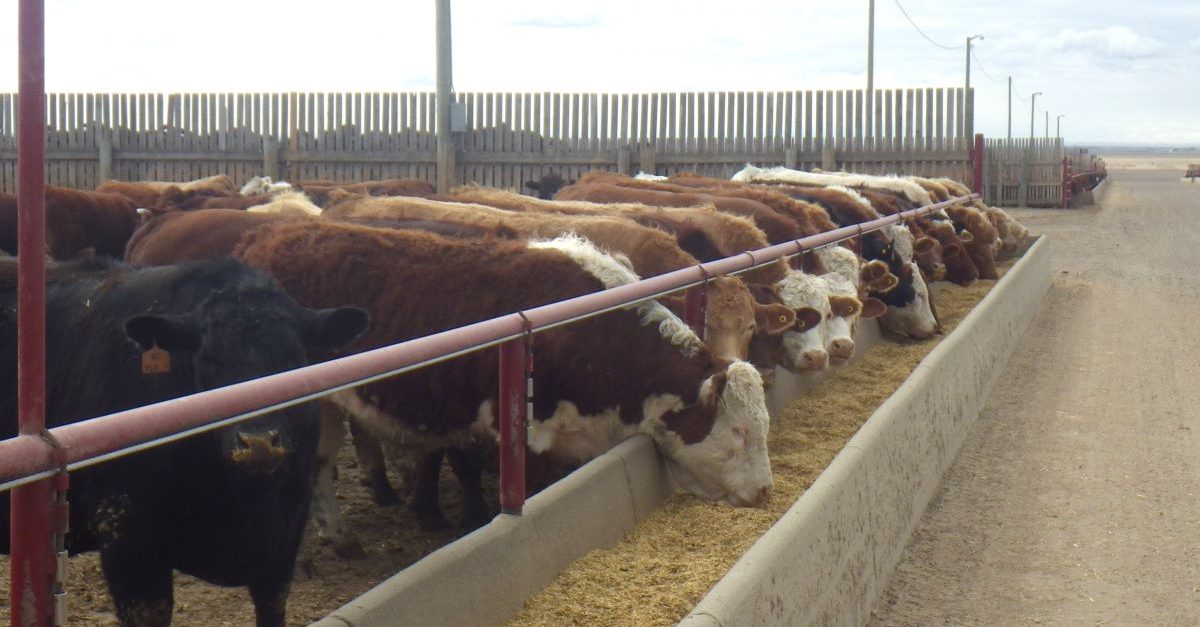AB Direct - Steers
Rail: 496.00-500.00 del
AB Direct - Heifers
Rail: 496.00-500.00 del
US Trade- Steers
Rail: 365.00-372.00 (IA, NE)
US Trade - Heifers
Rail: 365.00-372.00 (IA, NE)
Canadian Dollar
0.10

ABP Research Showcase Highlights | Delving into feedlot antimicrobial use
This is the third in a series of articles highlighting a selection of ABP-supported research projects that were featured at our Research Showcase in February 2023. Find the previous articles here.
The global rise in antimicrobial resistance has been a hot topic for several years, with experts warning of the potential consequences for humans and animals alike.
But without solid data on antimicrobial use, particularly in livestock production, it’s difficult to create strategies for antimicrobial use reduction and stewardship.

“There’s a concern that we are potentially heading for a time when antimicrobials are no longer effective,” said Sheryl Gow, veterinary epidemiologist with the Canadian Integrated Program for Antimicrobial Surveillance (CIPARS).
In light of this, CIPARS has created a framework to collect data on antimicrobial use and resistance in the Canadian feeder cattle sector. The surveillance framework was developed in 2018, and data collection started in 2019 with sampling from feedlots in Alberta, Saskatchewan, and Ontario.
“The purpose of the project is really to ultimately help support feedlot veterinarians and producers as they work to reduce disease, improve treatment efficiency, promote stewardship, reinforce consumer and public confidence, and support feedlot production sustainability,” Gow explained at Alberta Beef Producers’ Research Showcase in February, noting the benefits of monitoring antimicrobial use and resistance.
“Both nationally and internationally, it’s helping to address the requirements for sound data, and the availability of data can help reduce the risk of regulators or retail requirements restricting access to antimicrobials in the future,” she said. “It can also help protect market access and ensure that there’s public trust and confidence in beef production.
Findings from the antimicrobial resistance data
Between 2019 and 2021, nasopharyngeal samples were collected in feeder cattle upon arrival and rehandling to monitor antimicrobial resistance. These samples were tested for three bovine respiratory disease pathogens: Mannheimia haemolytica, Pasteurella multocida, and Histophilus somni. The testing identified the isolates susceptible to all the antimicrobials they looked at, as well as those that were multi-drug resistant, meaning the isolate had resistance to three or more classes of antimicrobials.
When looking at specific antimicrobials, CIPARS considered the category of importance to human health, with Category One antimicrobials being of the highest importance. Overall, they found low resistance to the Category One antimicrobials across the pathogens.
“I think the most interesting piece of this is that particularly for Mannheimia and Pasteurella, as we look at going from arrival to rehandling, that there is an increasing trend to resistance to the macrolide classes of antimicrobials,” Gow reported.
Macrolides include drugs such as Draxxin and Micotil, and Gow hypothesizes that this trend may be due to the use of this class of antimicrobials in feedlots.
As well, fecal samples were collected and tested for E. coli, Campylobacter, Salmonella, and Enterococcus, all of which have implications for human health. There were a couple areas within this data that illustrates why AMR monitoring matters for both animals and humans.
For example, CIPARS found that in 2021, only 13 per cent of the Campylobacter isolates found were susceptible to the antimicrobials tested. Part of this do to its high levels of resistance to Tetracycline. As well, its resistance to Ciprofloxacin, a Category One antimicrobial, has risen to around 26 per cent, which is of concern because of the importance of this antimicrobial class to human medicine.
Another area that shows the importance of AMR surveillance to human health was in Salmonella testing.

“Salmonella is usually isolated at really low levels from feedlot cattle in Canada, and most of the Salmonella that we do collect is susceptible to all of the antimicrobials that we test,” said Gow.
“However, in 2019, we did see something of interest with the isolation of multi-drug resistant Salmonella heidelberg, which was resistant to six to seven classes of antimicrobials.”
The isolates were found primarily in dairy feeder calves that were imported from the U.S. This concerned the researchers because of the pathogen’s role in causing human illness, so they ran whole-genome sequencing on the isolates.
“When we performed this, we found that these isolates were not genetically related at all to recent cases from humans in Canada,” she said. “We’ve also been lucky as well because we haven’t seen this showing up again since 2019.”
Findings from the antimicrobial use data
To study antimicrobial use, CIPARS collected data through random sampling of the participating feedlots. They found that in-feed antimicrobial use was by far the most common route of administration.
“We can see that the majority of antimicrobials that are provided in feed are provided for disease prevention, whereas when we look at disease treatment, those antimicrobials are primarily provided by injection,” Gow explained.
They found only three classes of antimicrobials were reported for use in feed, with tetracycline being the most common. In terms of injectable antimicrobial use, eight different classes were reported, the most frequently used being tetracyclines, macrolides, and amphenicals. Except for tetracyclines and macrolides, these antimicrobial classes were mainly used for disease treatment.
Looking deeper into the data, they found that the primary reasons for preventative use was to control liver abscesses and respiratory disease. The primary reasons for use as treatment were respiratory disease and lameness.
“If there was a desire for the feedlot industry to reduce the quantity of antimicrobials used, the largest impact would come from reducing antimicrobial use for the prevention of liver disease and Histophilus through feed,” said Gow.
“That being said, I don’t think any reduction in antimicrobial use should be considered until the whole impact on animal health and welfare is fully evaluated,” she continued. “I think that there needs to be a better understanding of the pathogenesis of the liver accesses to help direct the next steps.”
This study was partially funded by Alberta Beef Producers. To learn about more ABP-supported studies and find fact sheets for completed and in-progress projects, visit our Research and Development webpage.


